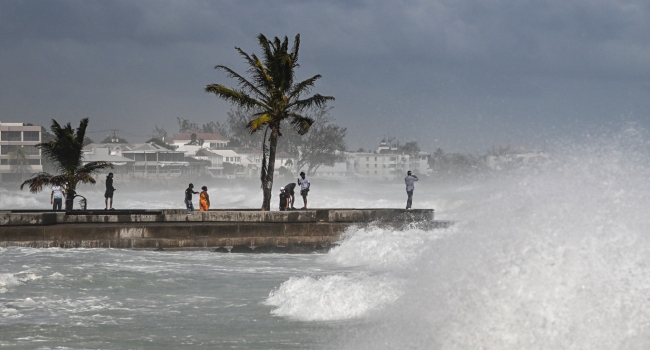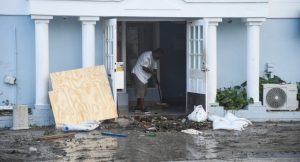
NATURAL DISASTER: HURRICANE BERYL KILLS 5, HURTLES TOWARDS JAMAICA
After killing at least five people and wreaking havoc on a vast swath of the southeast Caribbean, Hurricane Beryl made landfall in Jamaica on Tuesday as a powerful Category 5 hurricane.
The US National Hurricane Center (NHC) issued a warning that despite expectations that it may diminish somewhat later on Tuesday, the hurricane is still on course to hit Jamaica on Wednesday as a “near-major,” bringing with it flash flooding, rain, storm surges, and gusts that could be fatal.
As a Category 4 hurricane, Beryl has already destroyed portions of the southeast Caribbean, killing at least three people in Grenada, one in St. Vincent and the Grenadines, and one in Venezuela, according to officials.
Dickon Mitchell, the prime minister of Grenada, stated that homes, communications, and petroleum facilities on the island of Carriacou—which the NHC claimed was directly affected by the storm—have been completely destroyed by winds of up to 150 miles per hour (90 kilometers per hour).
He said at a press briefing, “With the exception of a brief satellite phone conversation this morning, we’ve had virtually no communication with Carriacou in the last 12 hours.”
About 9,000 people live on the 13.5-square-mile (35-square-kilometer) island. According to Mitchell, there were at least two fatalities there, and a third was killed when a tree fell on a house on Grenada’s main island.
The family of UN climate chief Simon Stiell is among the residents of Carriacou. His office said his parents’ property was damaged.
Some 90 percent of the homes along with the airport on Union Island, in St Vincent, have also been damaged or destroyed, Prime Minister Ralph Gonsalves said. The three-square mile island has a population of around 3,000.
Gonsalves said the storm also killed one person on another island, Bequia.
Beryl “has left in its wake immense destruction, pain and suffering,” he said in a Facebook video late Monday.
One man also died when swept away by a flooded river in the state of Sucre on Venezuela’s northeastern coast, officials there said.
Barbados appeared to have been spared the worst but was still hit with high winds and pelting rain, although officials reported no injuries so far.
Martinique was also largely spared, with damage to boats and some flooding in downtown Fort-de-France.
Experts say it is extremely rare for such a powerful storm to form this early in the Atlantic hurricane season, which runs from early June to late November.
Beryl is the first hurricane since NHC records began to reach the Category 4 level in June, and the earliest to reach Category 5 in July.
A Category 3 or higher on the Saffir-Simpson scale is considered a major hurricane.
Oceans are the main drivers of hurricanes, and there are many factors that go into their formation and intensity — but heat is a significant one.
The World Meteorological Organization (WMO) said Beryl “sets an alarming precedent for what is expected to be a very active hurricane season.”
The US National Oceanic and Atmospheric Administration said in late May that it expects this year to be an “extraordinary” hurricane season, with up to seven storms of Category 3 or higher.
The agency also cited warm Atlantic Ocean temperatures and conditions related to the weather phenomenon La Nina in the Pacific for the expected increase in storms.
Stiell, the UN climate chief, said climate change was “pushing disasters to record-breaking new levels of destruction”.
“Disasters on a scale that used to be the stuff of science fiction are becoming meteorological facts, and the climate crisis is the chief culprit,” he said Monday.
Beryl had maximum sustained winds of 165 miles (270 kilometers) per hour as it headed towards Jamaica and the Cayman Islands, the NHC said in its latest update from 1200 GMT.
The storm is moving rapidly across the Caribbean Sea at 22 miles (35 kilometers) per hour, forecast to pass near Jamaica on Wednesday and the Cayman Islands by Thursday.
Tropical storm warnings have also been issued for the southern coasts of Haiti and the Dominican Republic.
Hurricane force winds extend some 40 miles (65 kilometers) from the eye of the storm, the NHC said.
